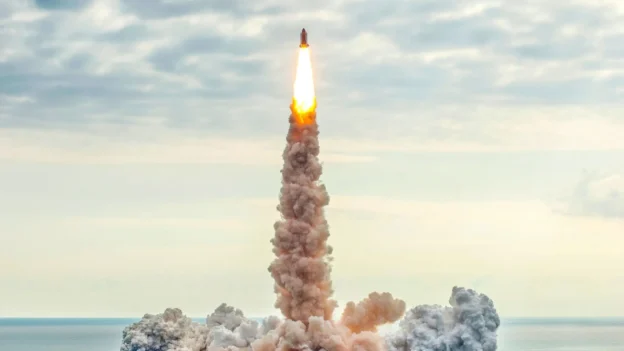The exponential increase in space, commercial and government rocket launches could be compromising the recovery of the ozone layer, warn scientists at ETH Zurich and the University of Canterbury.
The growth of the aerospace industry is generating emissions that directly affect the middle atmosphere, where ozone acts as a shield against ultraviolet radiation produced by the galaxy we inhabit.
The impact of space rocket launches into the atmosphere
According to a study led by Laura Revell and Sandro Vattioni, the number of launches has tripled in the last five years, and by 2030 it could multiply about eight times more. Simulations show that, if this trend continues,
Rocket emissions contain soot particles and chlorinated gases, which remain in the stratosphere much longer than terrestrial pollutants. The lack of natural cleanup processes, such as rain washing, allows these compounds to affect ozone chemistry for years.
On the other hand, solid fuel engines release chlorine, while almost all current systems emit soot. Only cryogenic propellants, which use liquid oxygen and hydrogen, have a minimal impact. However, less than 6% of current launches use this technology due to its operational complexity.
The re-entry of satellites and space debris also contributes to the generation of nitrogen oxides and metallic particles that could accelerate ozone loss, although these effects are not yet fully quantified in current models.
Unlike chlorofluorocarbons (CFCs) regulated by the Montreal Protocol, rocket emissions are not yet subject to international regulation. The authors of the study suggest that a coordinated response between governments, space agencies and manufacturers could avoid long-term impacts.
Among the main recommendations are the implementation of monitoring systems, limits on the use of high-impact fuels, and the limits on the use of high-impact fuels, promoting technological alternatives and advancing towards global regulations to protect this essential component of the atmospheric balance.
The precedent of agreements such as the Montreal Protocol demonstrates that it is possible to address global environmental threats. Applying the same political will to space activity is key to preserving ozone coverage in the coming decades.
Source: ETH Zurich
Photo: Shutterstock

